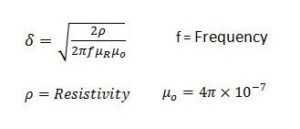This convertor helps engineers and students quickly determine the capacitive reactance (XC) and the corresponding capacitive susceptance (BC) for any given frequency and capacitance. It is particularly useful in designing filters, impedance matching networks, and AC circuits.
Conversion Formulas
XC = 1 / (2π × f × C)
BC = 2π × f × C (displayed in m-mhos)
Understanding the Formulas
The capacitive reactance formula calculates the opposition a capacitor presents to AC current, depending on the frequency and capacitance value. Higher frequency or larger capacitance results in lower reactance. The capacitive susceptance, BC, represents the ease with which AC current flows through the capacitor, which is the inverse of reactance and scaled to milli-siemens for easier reading.

Example Calculation
Given a capacitor of 10 pF at a frequency of 100 MHz:
XC = 1 / (2π × 100 × 10⁶ × 10 × 10⁻¹²) ≈ 159.1549 Ω
BC = 2π × 100 × 10⁶ × 10 × 10⁻¹² × 1000 ≈ 6.2832 m-mhos
Why this Capacitive Reactance and Admittance Convertor is useful:
1. Quickly compute XC and BC without manual calculations.
2. Helps in tuning filters and reactive circuits accurately.
3. Provides instant unit conversions for different frequency and capacitance scales.
4. Reduces human error when working with complex AC circuits.
5. Ideal for lab measurements, simulation verification, and RF engineering design tasks.







